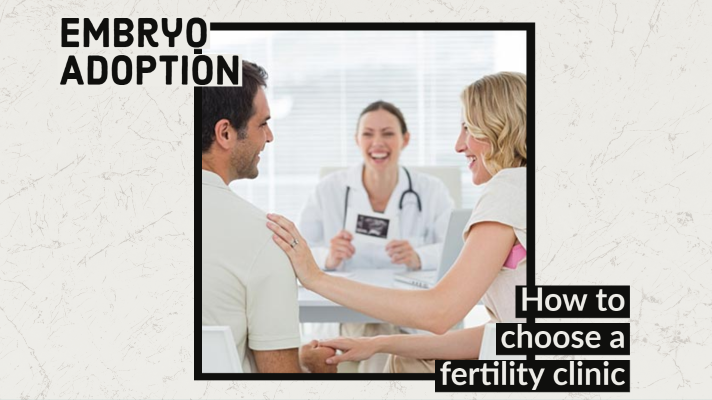For families embarking on the journey of embryo adoption or donation, finding a fertility clinic to work with for the frozen embryo transfer (FET) can be the most difficult aspect of the whole process.
Some families who have never worked with a fertility clinic before may not be sure where to start their research. Other families may come to find out they are not able to use the current clinic they have been working with for past fertility treatments, for a variety of different reasons. And some families hope and desire to be able to have a natural cycle transfer for their FET but cannot seem to find a doctor willing to work with this request.
When it comes to researching and finding a fertility clinic and doctor to work with, here are several tips on how to find the right practice for you and your adopted embryos:
1. Be sure the clinic accepts embryos into their practice that were created at another facility. Some fertility clinics, like CCRM and Shady Grove, do not accept any embryos on their patients’ behalves if they were created at another clinic. This will not work for you if you are having your adopted embryos shipped from another location. If you are working with an agency or organization that is established with a clinic location already, you do not have to worry about this.
2. Discuss with the clinic’s donor coordinator how open the embryologist is concerning what preferences and requirements they have when accepting the embryos into their practice. This includes, but is not limited to, the year the embryos were frozen, freezing method, embryo quality, embryo quantity, embryo grading, PGD/PGT-A results, age of the genetic mother, etc. This is important because it will determine how long it may take you to find a donor match.
3. Confirm that the clinic will allow for remote monitoring. Remoting monitoring means preparing for the transfer with one doctor at one location and then traveling to another doctor at a different location for the FET procedure itself. If the clinic is nearby, this may not be much of an issue, but if a fertility clinic is not within a reasonable travel distance, you may need to prepare for the FET with a fertility clinic closer to home.
4. If the doctor allows for remote monitoring, are there any required appointments or tests that they need you to undergo? Some fertility clinics require all their patients to complete a mock transfer before their FET. Other clinics may have you run through a variety of tests to determine you are able to carry a pregnancy. Every clinic and doctor is different, so it is important that you understand what they require of you.
5. What does the total cost look like? Every fertility clinic has its own unique fee schedule and insurances they accept. If you have fertility coverage, will your insurance be accepted? What is the cost of the FET procedure itself? Is there an additional fee for outside monitoring, or even using donated embryos? What other administrative costs may there be? And lastly, what are their embryo storage fees?
6. Can the clinic perform a natural cycle transfer, or will they only do medicated transfers? This can be a tough one to find, as most doctors like to complete medicated transfers because it gives them more accuracy when predicting the best time to schedule your FET. But there are some clinics and doctors that are willing to do a natural cycle FET. If you are working with an embryo adoption program, they may be able to give you some input on which clinics they may know of that would be willing to do this with you.
7. If you are doing remote monitoring at another fertility clinic, how long would they need you in town to complete your FET? Would they need to stick around for a couple of days, or a couple of weeks? If you are completing a natural cycle transfer, they may need you to be in town for at least four weeks.
8. Are the doctor and staff friendly, accommodating, and easy to work with? Probably the most important tip of all! If for some reason you do not have a good experience with the first few interactions with the fertility clinic, that may be a good sign they probably are not the best clinic to be working with.
Finding a clinic to work with you for your embryo adoption FET can be a challenge, but these tips should be able to help narrow down the time it takes you to search! For more information regarding embryo adoption and donation, visit EmbryoAdoption.org.


Recent Comments